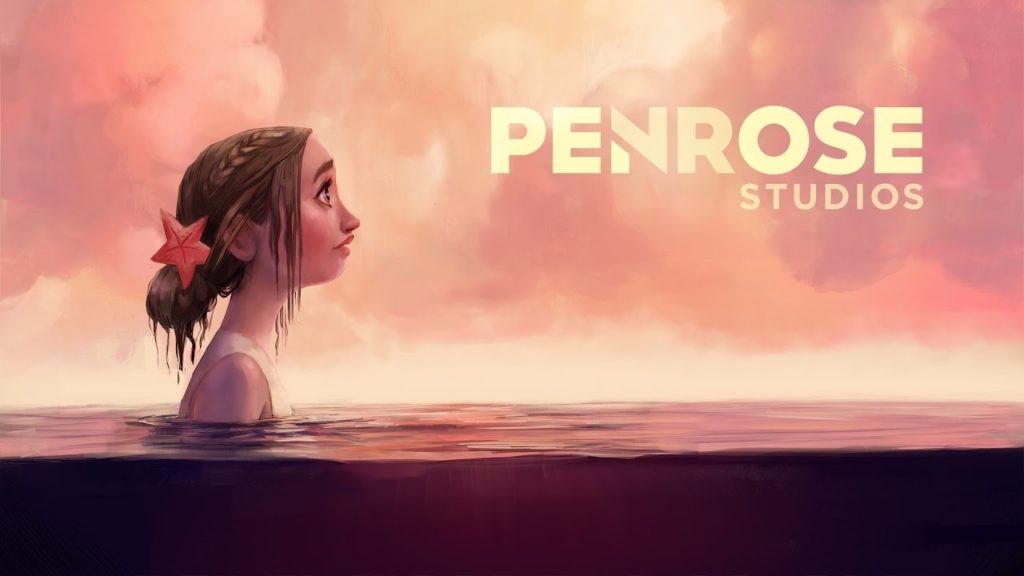Penrose Studios: The Pixar of VR?

Penrose Studios wants to be known as the Pixar of VR animated content. It has a good start, but will it capitalize on its first mover advantage?
While VR hardware is moving full steam ahead, people are starting to wonder – where is the content? Billions of dollars have been invested in VR in the last five years, however, most of this has gone towards hardware development. Many are wondering if now is the time to flip the switch to content creation. Without compelling content, VR will fail before it ever gets off the ground. Penrose Studios is trying to make its mark as a first-to-market high quality content creator for VR.
Introduction
Penrose Studios is a content company that’s focusing on creating animated augmented and virtual reality stories. They want to be known as the Pixar of VR. And while they have a lot to prove before they can adopt that title, they have the team in place to do it. Content creation is largely about effective storytelling. The founder, Eugene Chung, was formerly at Pixar and the head of Oculus Studios. He’s put together a strong team that comes from a range of big technology and content players, including: Google, Oculus, DreamWorks, Disney and more. In 2016, Penrose raised the largest seed round in VR history at $8.5MM!
Penrose believes that by bringing together the best in technology and creative, they will be able to develop the best stories currently available in VR. In fact, they have even developed their own tools internally to facilitate with the VR content creation process – just like Pixar did with 3D animation.
Value Creation
Penrose creates value in the VR ecosystem by providing it with compelling video content for the broader consumer market. Most major recent investments in VR have been going towards hardware – Magic Leap, Oculus, HTC, Google, etc. Content for these hardware devices has been an afterthought up until recently. Hardware creators are now looking for the best content out there so that they can gain mass consumer adoption. Most of the content creation for consumer applications is naturally happening in the videogaming space. Hardcore gamers tend to be quick adopters of new technologies and by creating top notch games that take advantages of the VR platform, hardware developers are hoping to go mainstream. However, to truly go mainstream and attract the masses, these hardware developers need easily accessible high quality video content that will attract the average Joe. Penrose is one of the first to enter this market by creating stories that will appeal to a wide audience and proactively get them to go seek out the VR experience.
Penrose can be viewed as a bridge that is creating value for both the hardware providers and the consumers. The value to consumers is that they will be more inclined to use VR as a platform for storytelling and entertainment with high quality content coming from Penrose. For hardware developers, Penrose provides them with content that will attract paying customers.
Value Capture
The most obvious way for Penrose to capture value in the VR ecosystem is to charge for their content. However, for now, they have released two films (The Rose and I and Allumette) which are available for free download through Steam. As they build their brand and gain a following, they will be able to charge for their movies, just like any other film or TV studio. Though there is not much information available on their monetization plan, the value capture is clear in that people are willing to pay for compelling content, just as they do for video games, music, movies and TV shows. An alternative strategy could be to take an adverting approach where they embed ads in their VR content, however, given their elevated content type, I doubt this would be their first choice to capture value.
Future Recommendations
As Penrose continues to grow and create bigger and better stories, they will have to quickly decide on a monetization plan. As a content studio, the traditional method of capturing value is noted above. However, content creation requires you to be hit-driven. Once there are multiple players in the market, it’s all about who’s making the best content – which is hard to get right all the time. As a result, I would recommend Penrose consider licensing their proprietary tools (dubbed Maestro) for content creation to other creators. There are currently no set tools or programs that allow someone to come in and easily develop animated video for VR. By licensing their tools, they can help grow the animated content vertical within VR and pave the way for creating the standard for animated VR production.
Sources:
Pixar-esque Penrose Studios raises $8.5M, VR’s biggest seed round
https://www.crunchbase.com/organization/penrose-studios#/entity
http://www.digi-capital.com/news/2016/07/record-2-billion-arvr-investment-in-last-12-months/#.WP_gPYjys2w
https://thevideoink.com/investments-in-vr-ar-tripled-in-2016-6bca397769b8
http://store.steampowered.com/app/460850/
http://store.steampowered.com/app/396060/







Interesting to read about a content creator for VR – I agree that this seems to be missing among all the talk of hardware. I wonder what format will prove most effective. Animated movies make sense because they are jovial and the idea of being immersed in them will not scare off users. I imagine the films will be much shorter than what we’re used to from Pixar. Especially in the nascent stages of adoption, I cannot imagine users sitting in headsets for feature length films. So where does that leave pricing? What will consumers be willing to pay if full films can be rented for $4?
Very interesting post – thanks for sharing! I completely agree that content is one of the key differentiators in this industry. As we have seen in other cases, hardware developers may enjoy initial gains but they are bound to face the commoditization threat. I wonder if Penrose can build on crowdsourcing for generation of content ideas. Building an exclusive community of designers early on may become an important competitive advantage for the company.
Great post – thank you for sharing! I totally agree with you that currently their patented technology is their greatest asset – much like the types of animation technology that Pixar has or VFX technology that Lucasfilm has. Really interested to see how this turns out for them and how the definition of storytelling changes in the future. Will also be interesting to see if a whole new subset of early adopters other than gamers will be needed to restart the adoption of this type of entertainment.
Nupur, great post as always. One of the major challenges facing VR creators at the moment is how to monetize while being careful not to reduce consumer interest due to cost. Do you know if Penrose has consider alternative sources of monetization, outside of consumers? Some creators in the industry have begun to consider charging VR platforms and even hardware producers to be able to have access to their content. A second question I continue to think about is will these VR native content creators be able to compete once the major studios begin to put a full effort around content creation. While there are certainly first-mover advantages, it is hard to imagine a world where consumers loyalty to Penrose would trump that of Disney. Will be very interesting to see how these animators/creators evolve as the industry grows!
Great post and interesting how Penrose has decided to approach the VR market. It definitely seems like more of a passion project for the founder given his background. Building out the content creation tools for VR creators is important and I agree that they should look to monetize that part of their business. Further, do you know if they have plans on creating curated or customized content for brands and other VR companies, and being the high-end VR bespoke creators?